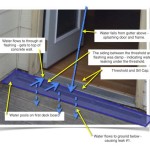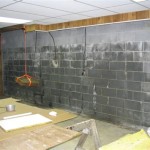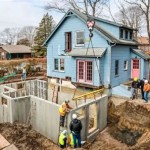How To Make Basement Stairs Not So Steep in the Middle
A steep staircase in a basement can pose several problems, including safety hazards, difficulty in moving items, and an unpleasant aesthetic. Fortunately, there are ways to address this issue, making them easier to navigate and more aesthetically pleasing. This article will explore various strategies to make basement stairs less steep in the middle, offering a combination of structural modifications and design tricks.
1. Adding Risers
One common approach to reduce the steepness of basement stairs is to add risers to the middle section. This involves adding a step within the existing flight of stairs, essentially breaking the long climb into two shorter sections. The process involves calculating the required riser height and tread depth, ensuring they are within an acceptable range for safe and comfortable usage. This requires carefully measuring and cutting the new riser material, which could be wood, concrete, or another suitable material, and securely attaching it to the existing structure. While adding risers can be a significant undertaking, it often provides the most substantial reduction in steepness.
2. Platform Installation
Another solution involves creating a landing platform in the middle of the stairs. This platform provides a flat and stable surface for rest and allows for a more gradual ascent or descent. The platform can be constructed from wood, concrete, or other suitable materials and integrated seamlessly with the existing stairs. The platform size and placement should be determined carefully to optimize safety and functionality. This method can also improve the overall aesthetic appeal of the basement stairs and create a more spacious feel.
3. Stair Treads Adjustments
Modifying the existing stair treads can also play a role in making basement stairs less steep. This involves adjusting the treads to increase their depth, providing a wider footprint for each step. The process involves carefully measuring the existing treads, calculating the required increase in depth, and cutting and installing new tread boards. However, it is crucial to consider structural constraints and ensure that the adjustments do not impact the stability of the stairs. This method can be effective in making the stairs less steep, but it might not be suitable in all cases, depending on the existing stair structure and limitations.
4. Handrail Adjustments
While not directly altering the steepness of the stairs, modifying handrails can significantly improve safety and ease of use. Adding an intermediate handrail in the middle section of the stairs can provide additional support and stability, especially for individuals who have difficulty with mobility. The handrail can be made from various materials, such as wood, metal, or vinyl, and should be installed securely to the existing structure. This modification can make the stairs more user-friendly, even without directly addressing the steepness issue.
5. Lighting & Other Considerations
Proper lighting and other design elements can also play a role in making basement stairs less steep. Adequate lighting can help improve visibility, making it easier to navigate the steps. Dark or shadowed areas can make the stairs appear steeper than they actually are. Additionally, using contrasting colors for treads and risers can create a visual cue that enhances safety and ease of use. Other design elements like adding a non-slip surface to the treads can further improve safety and prevent accidents.
When considering any modifications to basement stairs, it is essential to ensure that they meet local building codes and safety regulations. Consulting with a professional contractor or engineer is recommended, especially for structural changes like adding platforms or risers. They can provide expert advice and ensure the modifications are safe, functional, and meet all applicable regulations. By carefully planning and implementing the right modifications, you can transform a steep basement staircase into a safer, more comfortable, and visually appealing feature of your home.

How To Convert Bottom Of Straight Stairway Three Step Winder Easy Home Remodeling Tutorial Youtube
:strip_icc()/100196751-6c97e9963e864e8bbe145ddc81eb095f.jpg?strip=all)
18 Basement Stairs Ideas That Add Style And Function
:strip_icc()/101166442-b33786f9521c4d298c5be7c8560f9aa5.jpg?strip=all)
18 Basement Stairs Ideas That Add Style And Function

Reconfiguring Basement Stairs W O Adequate Headroom

How Can We Redesign Our Staircase Hometalk

You Need This Here S A Great Idea To Be Able Add Staircase Down Your Basement Or Garage And Hide It Would Awesome For Single Level Home With Full Workshop

Diy Basement Staircase Makeover Rooms For Rent Blog

Basement Stairs With No Square Angles Wood Designer

Safety Of Steep Basement Stairssafety Stairs

Fixing Stairways With Smaller Steps Might Be More Difficult To Repair Than You Think







